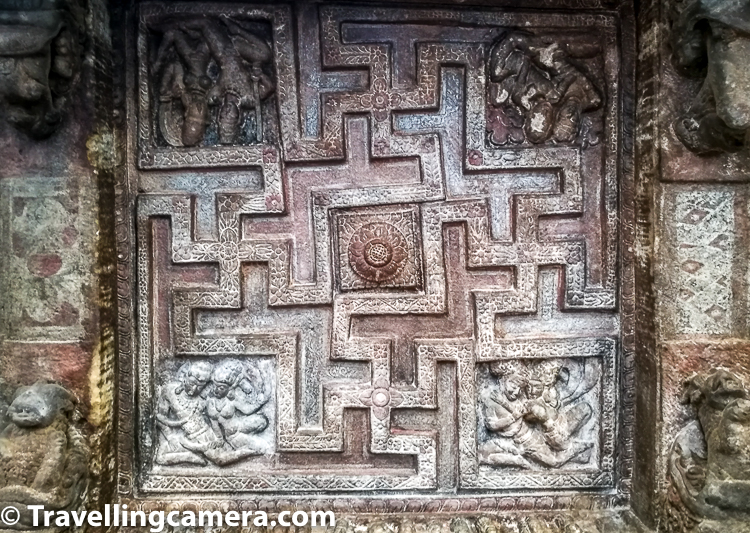Creative Ceilings are one of the favourites of Travellingcamera and we have been sharing some posts specially dedicated to such creativity. In this blogpost we are sharing about carved Ceilings we saw at Badami Cave temples in Karnataka state of India. Most of these are influenced by religious faith and beliefs. We loved the Brahma on Hamsa in cave-3 on the ceiling but not just that.
Badamai Cave Temples are most popular places to explore in this region. There are 4 cave temples here and 3 are dedicated to Shiva and Vishnu, while the 4th one is dedicated to Jainism. Each temple has brilliant carvings and intricate art-forms. It's hard to imagine how people would have carved temples & god forms to depict stories. Wondering if there are artists in India who can create such things today and if government or other organizations are supporting these initiatives.
Note the dancing shiva in the first photograph which is clicked near cave-1 in Badami.
Time needed to explore Cave Temples : 2-3 hrs
Entry Ticket Fee : 5 Rs for Indians and 100 Rs for Foriegners ($1.5)
Badami Fort was built by Tipu Sultan in 18th century and it has few watchtowers and 2 shiavalayas. Few other essential things include Durga Temple, Lad Khan Temple, Ravanaphadi Cave Temples, Huchimalli Temple, Meganagudi group of temples, Gowda Temple & lot others.
Timings - 6am to 6pm
Bhuthanatha Temples is located around the beautiful Agstya lake in Badami and it's mainly dedicated lord Shiva. This temple is made up of sandstone, which is locally available in Badami.
The ceilings show Vedic deities such as Agni and Indra, along with Brahma, Vishnu and Shiva. Other deities displayed include love god and goddess Kama and Rati respectively, as well as Nayikas with various emotional expressions. The carvings show the same vahana for the various gods and goddesses that are found in contemporary Hinduism. Evidence of pigment remains have survived and are visible in the ceiling. It is likely that the ceiling was elaborately painted like those in Ajanta Caves of Maharashtra.
Open Air Museum is another interesting place in Badami which has 4 separate section and 2 of them are open air. This museum has plenty of things from mythological & prehistoric era. This part of South India has certainly lot to explore & impress.
Aihole in this region is a store of temples & heritage. Aihole has plenty of temples and ruins spread over the town and that makes it very special. It's also advisable to accompany a guide who can share about Aihole it's history and how it transformed over a period of time.
In above photograph, Vishu is sitting on Adisheesha. This is clicked at Cave temples of Badami.
Bhanshankari Temple is also located in Bagalkot district of Karnataka. This is considered as one of the important shrines in Karnataka state of India.
Cave 3 also shows fresco paintings on the ceiling, some of which are faded and broken. These are among the earliest known surviving evidence of fresco painting in Indian art. The Hindu god Brahma is seen on Hamsa vahana in one of the murals. The wedding of Shiva and Parvati, attended by various Hindu deities is the theme of another.
Vellamma temple in Badami is another place to visit in this area.
Vellamma temple in Badami is another place to visit in this area.
After exploring Badami, I am most impressed by Cave Temples.
You can notice a mosque between these 2 rocky mountains. It's called Mosque of Badami in Karnataka state of India. This is close to the entry gate of Cave temples and the bus stand.
Agstya Lake is considered as a holy lake of Badami which faces famous cave temples of Badami. Apart from caves, this lake is surrounded by redstone temples & the mosque of Badami. While we were walking around the caves, this lake was clearly visible from cave-2 and beyond. It was certainly a good place for many of the co-travellers to get a photograph clicked.









.jpg)
Comments